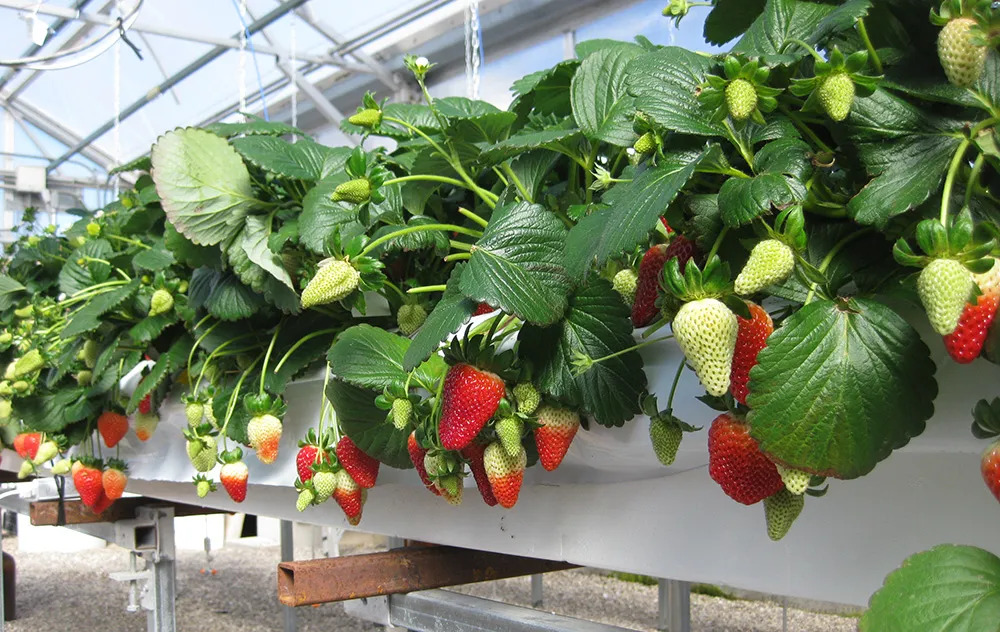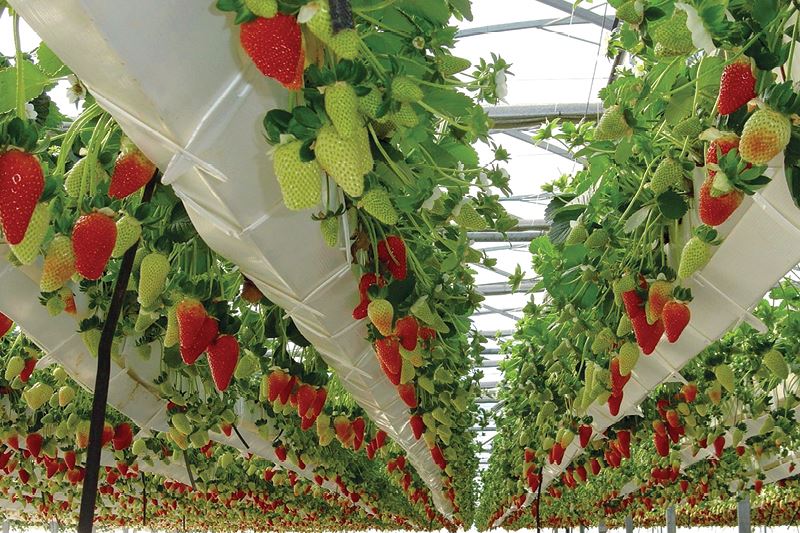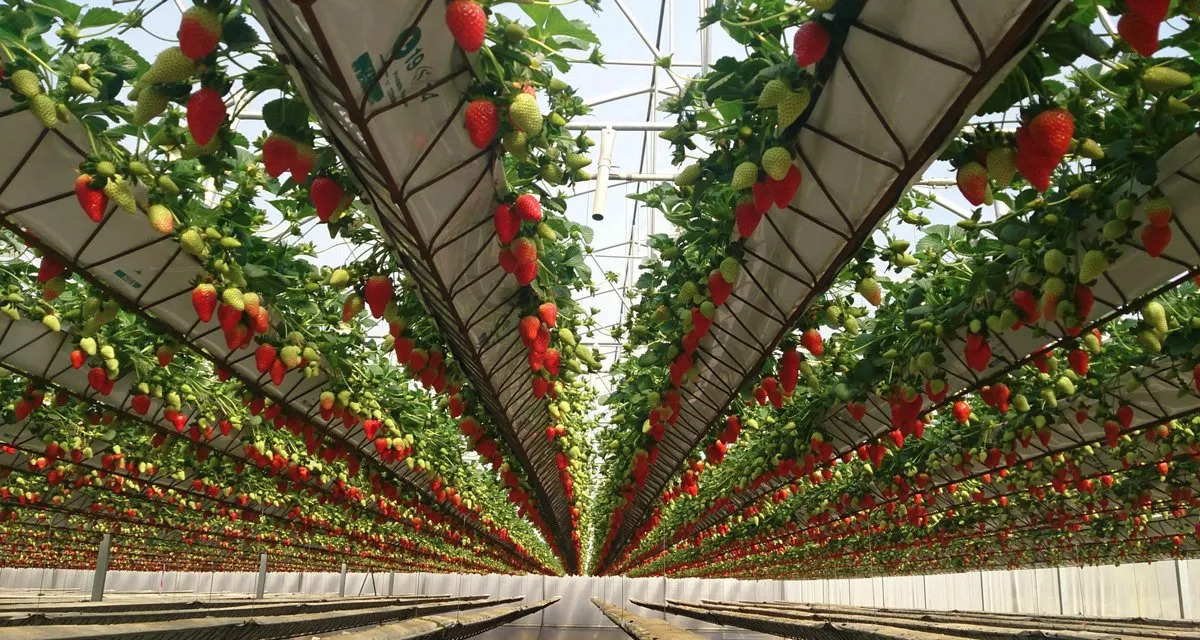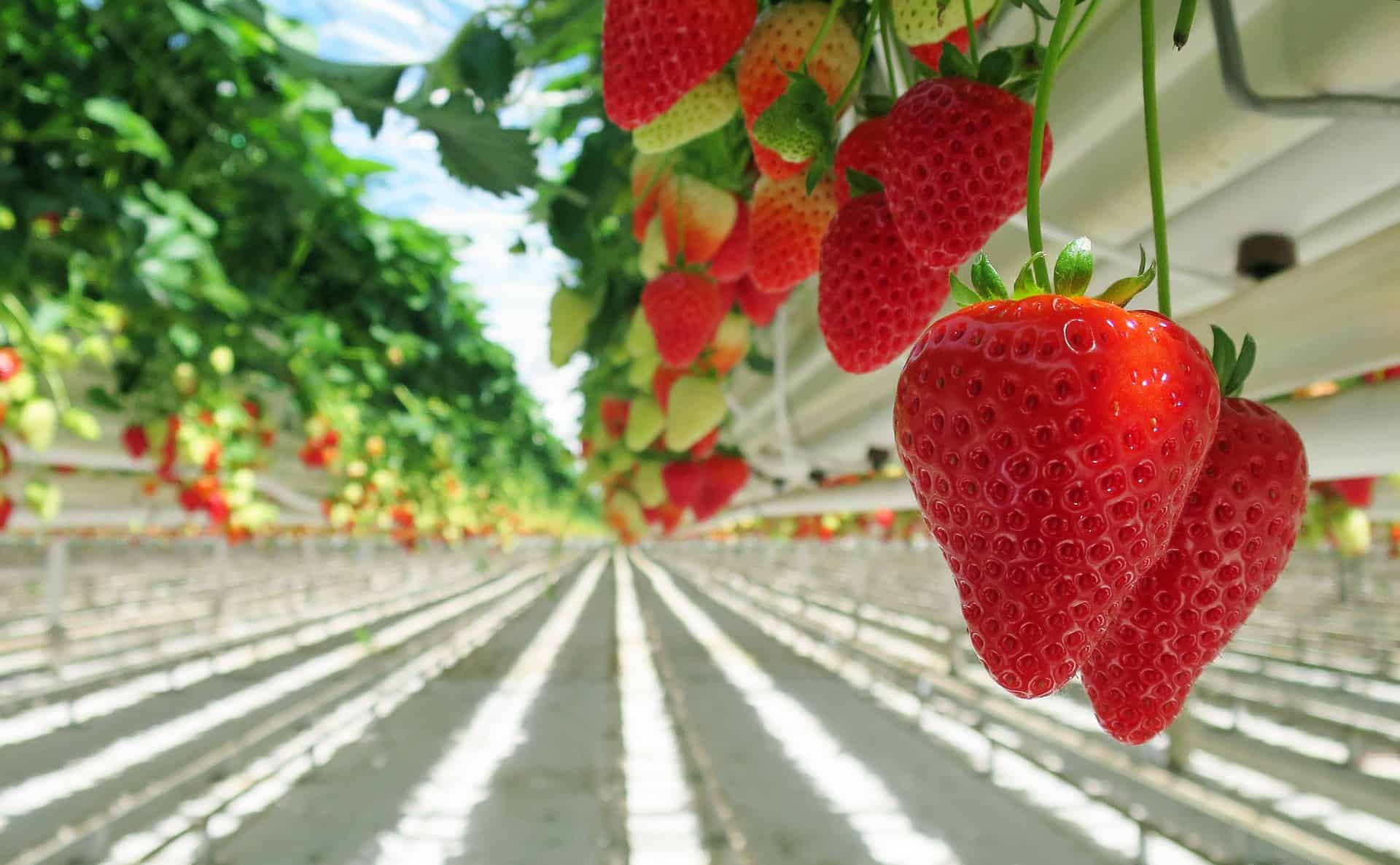How To Grow Hydroponic Strawberries
Learn the step-by-step process of growing hydroponic strawberries indoors or outdoors. Our comprehensive guide covers the best hydroponic system for strawberries, including DIY setups, nutrient requirements, optimal pH levels, and light requirements.
Discover the benefits of hydroponics for strawberries, and find out how to maximize your hydroponic strawberry yield. Whether you're a beginner or an experienced grower, our hydroponics guide will help you cultivate luscious, cost-effective strawberries in a hydroponic system all year round.
Benefits of Growing Strawberries Hydroponically
Growing strawberries hydroponically is an excellent way to produce consistent fruit all-year-round. Hydroponic systems offer a controlled environment, optimal nutritional conditions and protection from pests and fungi, resulting in significantly higher fruit production. With hydroponic systems, strawberry plants can easily grow in water or an inert growing medium like coconut coir, with nutrient solutions pumped directly to the roots. This means that hydroponic strawberries are much cleaner than traditional soil-grown crops since there's no risk of soil-borne diseases.
Indoor hydroponic systems, specifically, offer a year-round solution to strawberry farming, making it a more accessible option for growers. Hydroponic strawberries are easier to maintain, require less space compared to traditional farming methods, and have a higher yield. Plus, hydroponic strawberries have a consistent flavor, texture, and color, making it more profitable for commercial growers. Overall, growing strawberries hydroponically offers many benefits, and it's a cost-effective, efficient and sustainable way to produce the cleanest and healthiest crops.
Drawbacks of Growing Strawberries Hydroponically
Growing strawberries hydroponically has become increasingly popular due to its many benefits. However, it is important to understand the potential downsides before deciding to invest in a hydroponic system.
One significant drawback is the initial setup cost, whether building a DIY hydroponic strawberry system or purchasing one. The cost of equipment, lighting, and nutrient solutions can add up quickly.
Another challenge that arises from growing strawberries hydroponically is the lack of soil. Strawberry plants require a delicate balance of nutrients, water, and oxygen to thrive, and without soil, it can be difficult to achieve this balance. It may also require additional maintenance such as monitoring pH levels and adjusting nutrient solutions to ensure the plants have everything they need.
How to Grow Hydroponic Strawberries
Hydroponic strawberries are a popular choice among gardeners because of their efficient utilization of resources, abundant yields, and consistent growth rates. It's a great way to cultivate strawberries in small spaces, and with proper care, they can produce delicious fruit all year round. In this guide, we will show you how to grow hydroponic strawberries step-by-step.
Strawberry Varieties
There are a variety of strawberry plant varieties suitable for hydroponic cultivation, but some are more commonly grown than others. Two types of strawberry plants that are highly recommended for hydroponic systems are the everbearing plants and day-neutral strawberry plants. These varieties are known for their ability to continuously bear fruit throughout the growing season.
The most common strawberry varieties grown in hydroponic systems include Albion, Seascape, and San Andreas. Albion is known for its large and sweet-tasting berries. Seascape is a day-neutral variety that produces berries with a glossy and bright red appearance. San Andreas is a newer variety that is known for its disease-resistant qualities and high yields.
When selecting strawberry varieties for hydroponic cultivation, it's important to choose plants that are adapted to indoor growing conditions. These plants require less space and can tolerate higher temperatures and humidity levels.
Nutrient Solution/Liquid Nutrients
When it comes to growing hydroponic strawberries, the correct nutrient solution is essential for the success of your crop. While some hydroponic systems come with pre-mixed nutrient solutions, it's important to understand what goes into making one and how to maintain the correct N:K ratios throughout the different phases of growth.
You can either make your own nutrient solution or purchase a pre-made one. If you choose to make your own, you'll need to include the necessary ingredients such as nitrogen, phosphorous, potassium, and secondary nutrients such as calcium and magnesium. During the vegetative phase, your nutrient solution should provide a higher N:K ratio while during the fruiting phase, this ratio should be reversed to promote fruit production.
It's important to avoid an excess of nitrogen when growing hydroponic strawberries as this can result in poor fruit quality. Additionally, providing adequate amounts of calcium and magnesium during the flowering phase can help prevent blossom-end rot.
Coconut Coir, Peat Moss, or Other Growing Media
When it comes to growing hydroponic strawberries, choosing the right growing media is crucial. Hydroponic growers can choose from various substrates, including coconut coir, peat moss, and growstones. But which one is the best for your hydroponic strawberry system?
Coconut coir is a popular choice for its water retention and air porosity properties. It allows for excellent drainage and provides the plant with enough oxygen while also holding onto the right amount of moisture. Studies by the University of Arizona have shown that a combination of 50-70% coconut coir mixed with perlite or granulated Rockwool can provide the highest yields. Peat moss is another common medium for hydroponic strawberries that can hold onto moisture and improves nutrient absorption.
Growstones are a more sustainable option out in the market today that can also provide excellent aeration for your plants. They are made out of recycled glass and provide a better alternative to non-sustainable media options such as perlite or vermiculite. However, you may need to add more nutrient solutions with growstones as they are highly porous and can cause nutrient depletion.
Lights and Hours of Light per Day
When it comes to growing hydroponic strawberries, light and temperature conditions play a crucial role in determining the yield and quality of your fruits. Indoor hydroponic gardens require a source of artificial light, particularly for those who do not have access to natural sunlight. The optimal amount of light required per day for hydroponic strawberries is 12-14 hours, and it is crucial to maintain a consistent light schedule to ensure the proper growth of your plants.
In terms of the best type of artificial light, LED grow lights are recommended for hydroponic strawberries. They are energy-efficient, long-lasting, and provide the perfect spectrum of light that the plants need. Additionally, it is essential to maintain a specific range of temperatures to aid in fruit production. Strawberry plants thrive in temperatures between 65-80 degrees Fahrenheit, and any temperature above or below this range may affect growth and fruit quality.
It's worth noting that certain varieties of strawberries, particularly short-day varieties, require different light hours. These plants usually thrive in 8-10 hours of light per day, providing you're using low-intensity LED lights.
Temperature Conditions
Temperature plays a crucial role in hydroponic strawberries' growth and development. It influences growth rate, quality, and ripening of the fruit. To achieve optimum results, the temperature range should remain between 61 and 77 degrees Fahrenheit (16-25°C). Maintaining a steady temperature of approximately 77 degrees F (25 degrees C) promotes the healthy growth of plants.
It is crucial not to allow the temperatures to exceed 80 degrees F(27 degrees C) as it can inhibit growth and affect the flavor and ripening of the fruit. The most effective way to control temperature is through the circulation of air or water. Maintaining a proper temperature ensures healthy plant growth and a good harvest.
Which Hydroponic System is Ideal for Growing Strawberries?
Hydroponic strawberries are a wonderful way to enjoy fresh, juicy strawberries year-round. Growing strawberries hydroponically can be done both outdoors and indoors using a hydroponic system. The best hydroponic system for strawberries depends on a few essential factors. These include the available space, the desired yield, and the grower's budget.
Ebb and Flow
When it comes to growing strawberries hydroponically, one of the most popular methods is using the Ebb and Flow system. This system works by using a timer to pump nutrient solution into a container or growing tray, allowing the roots of the plants to absorb the necessary nutrients and water. Once the cycle is complete, the excess solution is drained back into a reservoir.
The Ebb and Flow hydroponic system is highly recommended for growing hydroponic strawberries due to its ease of use and effectiveness. Some popular systems that can be used with this method are the Active Aqua Grow Flow, Botanicare Ebb and Grow, and Viagrow Ebb and Flow system.
To maintain this system, it is important to monitor for any leaks or drainage issues. The timer should also be adjusted based on the growth stage of the strawberry plant. It is important to note that nutrient solution and pH levels should be checked regularly to ensure optimal growth and yield.
Hydroponic Drip Systems
Hydroponic drip systems are an efficient method of growing hydroponic strawberries. These systems provide the exact amount of moisture to the plants, ensuring optimal growth and fruit production. This is achieved by delivering nutrient-rich water directly to the roots of the strawberry plant through a network of drip emitters.
While hydroponic drip systems are efficient, they do require more work to set up and maintain than other hydroponic systems. It is essential to monitor pH levels, adjust nutrient solutions, and ensure that the water pump and drip emitters are functioning correctly. However, with proper care, these systems can be a cost-effective and space-efficient way to grow hydroponic strawberries indoors.
Troubleshooting
Troubleshooting hydroponic strawberries is an essential part of maintaining a successful harvest. Even with proper care and attention, issues may arise that require prompt intervention. Some common problems encountered by indoor growers include mold growth, lack of fruit production, discoloration of leaves, and nutrient deficiencies. Identifying these problems early on and taking corrective action is crucial to avoid crop failure. Solutions may include adjusting the pH level, adding or reducing nutrients, improving lighting conditions, or addressing disease or pest infestations.
Growing Problems
When growing hydroponic strawberries, there are a few common problems that you may experience along the way. Under and overfeeding can occur when the nutrient solution is not properly diluted, leading to stunted growth or burnt roots. To solve this issue, adjust the nutrient solution to be more diluted and keep an eye on the plant's growth.
Another issue that can occur is pH imbalances, which can lead to nutrient deficiencies and hinder plant growth. To remedy this issue, use a pH meter regularly to ensure the solution's pH level is within the optimal range for strawberry plants.
Nutrient deficiencies can also be a problem, which can appear in the form of yellowing leaves or stunted growth. Keeping a detailed journal of your plant's growth and nutrient intake can help you diagnose and remedy any deficiencies. Adding more of the necessary nutrients to your nutrient solution can solve this issue.
Pests
Pests can be a major issue when growing hydroponic strawberries. Spider mites and aphids are common pests that can infest hydroponic systems. Spider mites feed on the leaves of the strawberry plant, while aphids suck the sap from the stems and leaves. Both can cause damage to the plant and reduce fruit production.
Biological control agents can be used to combat these pests. Ladybugs are a natural predator of both spider mites and aphids, and can be introduced into the hydroponic system to reduce their population. Vinegar traps can also be used to catch fruit flies, which are attracted to the strawberry fruit.
Regular monitoring of the hydroponic system is important to catch and control pests early. Keeping the hydroponic system clean and well-maintained can also prevent the build-up of pests. In addition, introducing a variety of strawberry plants that are resistant to pests can also help.
Diseases
Indoor strawberry crops may be vulnerable to a range of diseases, including botrytis, which can lead to gray mold and rot. The key to keeping such diseases at bay is to take preventative measures by establishing and maintaining a clean growing space, as well as implementing good sanitation practices. One of the best ways to control indoor diseases is to start with disease-free plants and avoid bringing infected plants into the growing area.
Additionally, it is essential to maintain a controlled humidity level, as too high or too low humidity can increase the risk of diseases. To further minimize the risk of diseases, it is recommended to divide the growing area into smaller sections to prevent any potential diseases from spreading throughout the entire crop.
Frequently Asked Questions
How do I set up a hydroponic strawberry system?
Setting up a hydroponic strawberry system can be a DIY project. You will need to choose a system that suits your needs and assemble the components together. Generally, you'll require a grow tray, water pump, water filter, water reservoir, hydroponic nutrients, and an appropriate hydroponic system. Include the necessary lighting which is important to ensure your plants receive adequate light. After setting up everything together, clean water is poured over the roots.
What are the most suitable varieties of strawberries for hydroponics?
Day-neutral strawberries are the best varieties for hydroponics, but June-bearing and ever-bearing strawberries can also be grown hydroponically. Day-neutral strawberries yield fruit throughout the year, and also thrive in hydroponic systems.
Is hydroponic strawberry farming commercially profitable?
Commercial hydroponic strawberry farming can be profitable when done right, but it requires a considerable investment in resources and infrastructure. Some commercial hydroponic strawberry farms use vertical systems to maximize space and yield. A well-planned and managed hydroponic farm has the potential to produce high-quality strawberries that command a premium price in the market.
Can I make my own hydroponic strawberry system?
Yes, DIY hydroponic strawberries are possible with the right materials and knowledge. There are many online resources and plans to help you create your own hydroponic strawberry system. The cost of materials required varies, but you can tailor your system to suit your budget and needs. You just need your plan, a hydroponic supplier, some basic construction skills and you’ll have a hydroponic strawberry system.
Final thoughts
Growing hydroponic strawberries is a wonderful pastime that brings joy to homes regardless of the season or location. Hydroponics for strawberries provides an opportunity to enjoy fresh and delicious fruits even after the fall sets in.
It is important to pay attention to lighting requirements, pH levels, and temperature to ensure healthy and robust plants. With careful planning and attention to detail, growing hydroponic strawberries can be a fun and rewarding experience.














